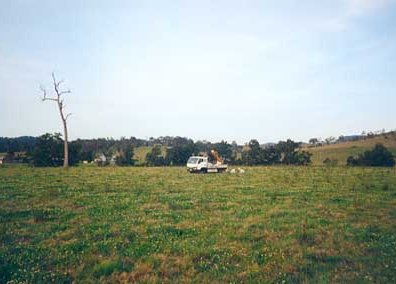Not all Kurosols are sodic but this soil is a typical sodic soil (a soil that disperses readily and has a poor structure), recognisable in the field by crusting, hardsetting, and dispersion.
Soils like this are tight soils that are difficult to till. Rain won’t infiltrate and crops show poor establishment and growth. Plant roots are concentrated in a shallow mat at the surface of the soil and there are no macropores or channels in the profile to indicate soil fauna activity.
This paddock was rotary hoed in the 1970s and that destroyed the fragile structure of the topsoil.
Hedges paddock is an example of a site that looks promising for an agricultural enterprise until you examine the soil! In the 1980s the area was thought suitable for a horticultural research project because it is fairly flat, accessible and out of flood reach. A closer inspection revealed problems of drainage, especially in the B horizon and the massive structure. The A horizon would need major soil amendments if any type of intensive agriculture was attempted.
This elevated flat in Hedges paddock is a typical example of an older alluvial terrace, with a soil having a much longer period of weathering (and leaching) than the soils on the younger flood-prone alluvial terraces lower and closer to the river.

Profile description
- 0cm: A1 horizon. Dark greyish brown loam with massive structure. Roots common, pH 4.5
- 9cm: A2 horizon. Fe, Mn concretions to 5mm, colour and structure similar to A1, plant roots common, drainage fair
- 23cm: B horizon. Greyish brown medium clay. Very large structural aggregates but not massive, roots common to bottom of profile, drainage poor, clay does not disperse
- 30-40cm: pH 5.2
- 80-90cm: pH 5.7
Tocal newsletter
Want to find out about news, events, courses and publications?

